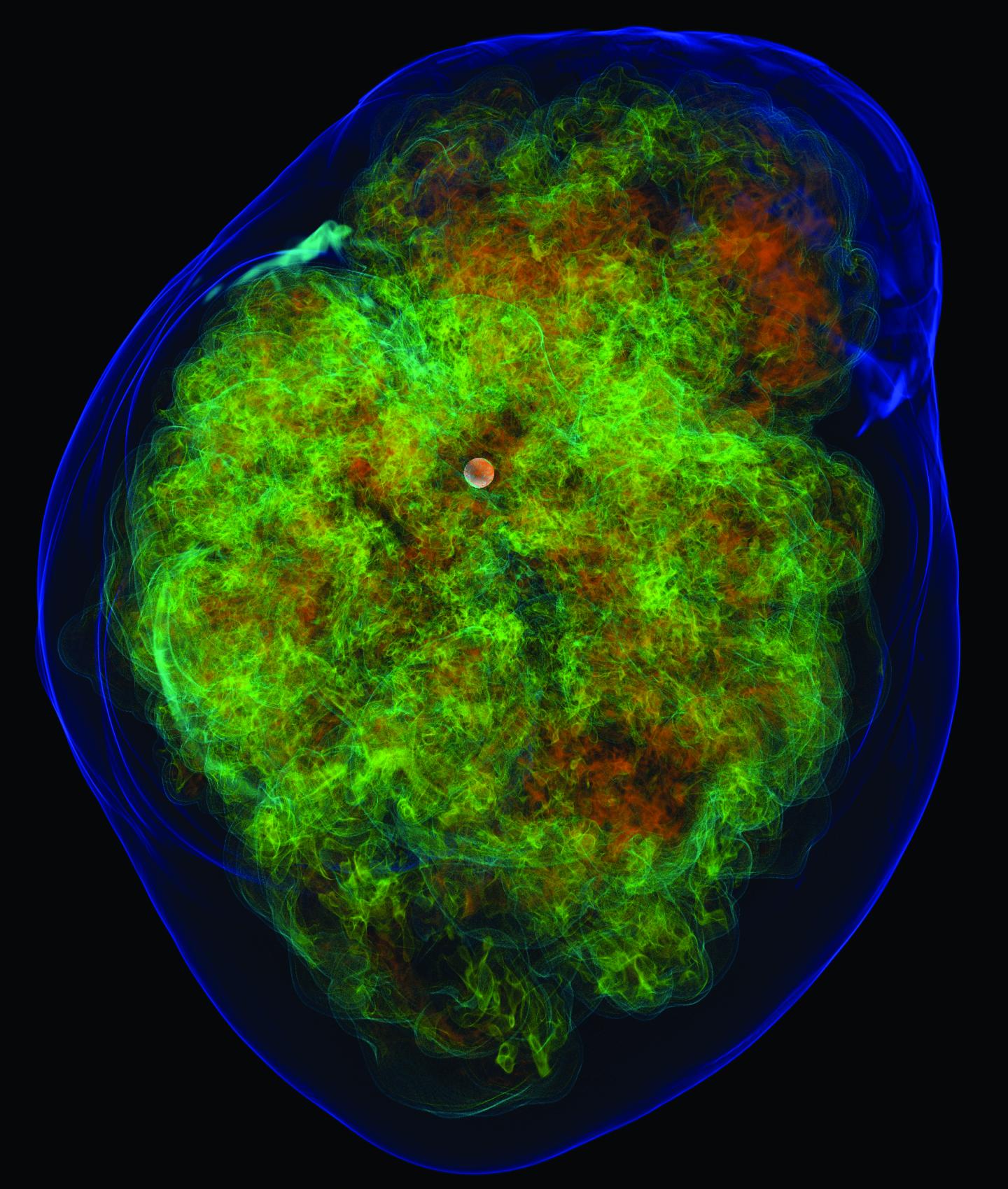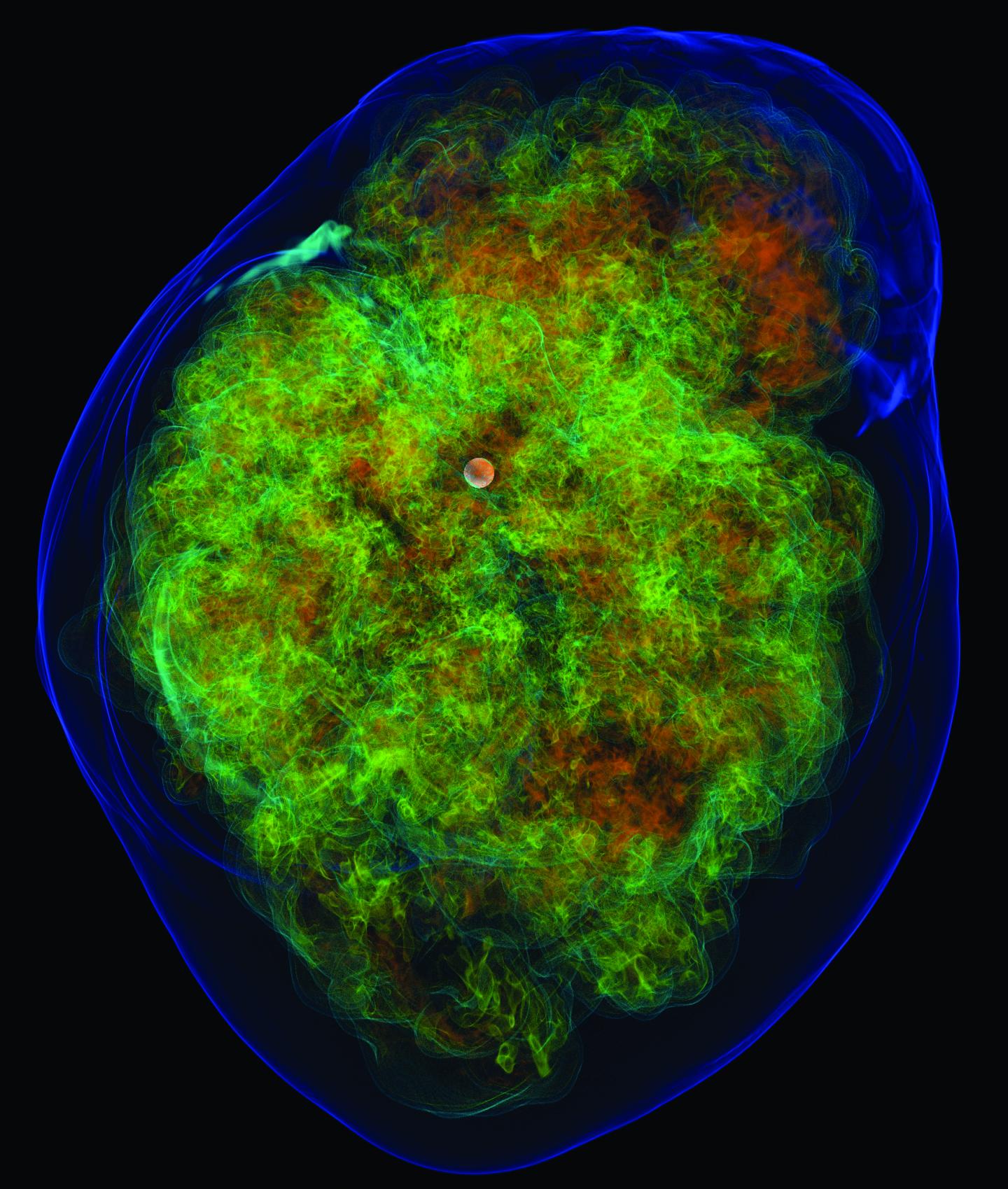
Credit: Adam Burrows and collaborators/Princeton/TEAMS
Adam Burrows, a professor of astrophysical sciences, and David Radice, an associate research scholar, have won funding for a multifaceted five-year project to investigate "some of the most explosive phenomena, some of the most violent, that occur on a regular basis in the universe," said Burrows.
The prize was awarded by the Office of Nuclear Physics and the Office of Advanced Scientific Computing Research of the U.S. Department of Energy's Office of Science in the fourth round of the computational science program "Scientific Discovery through Advanced Computing" (SciDAC4). Each SciDAC project involves a collaboration between scientists and computational experts who combine their talents in science and computing to address high-priority problems at the leading edge of nuclear physics.
Among the 2017 SCiDAC4 winners is the Towards Exascale Astrophysics of Mergers and Supernovae consortium (TEAMS), a group of computational nuclear astrophysicists at 12 national laboratories and universities, including Princeton University's Burrows and Radice.
TEAMS researchers are focusing on the synthesis of heavy elements in cataclysmic events, such as supernovae and neutron star mergers, and on the prediction and characterization of observable signatures.
Burrows said the award is "to make more rigorous our understanding of these environments and their consequences — their signatures, their products."
Those products include most of the elements on the periodic table. "Merging neutron stars produce the heaviest elements," Burrows said, "but the oxygen we breathe, the iron in our hemoglobin, the calcium in our bones, the fluorine in our toothpaste — these sorts of things are unambiguously products of supernova explosions: the death of a massive star."
On Oct. 16, researchers announced that the Laser Interferometer Gravitational-Wave Observatory (LIGO), whose creators won the 2017 Nobel Prize in Physics, had detected gravitational waves coming from the merger of two neutron stars.
Four times previously, LIGO scientists had announced detections of merging black holes. Merging stars are different, Burows explained.
"Black holes produce much stronger signals, but LIGO was built, actually, to see merging neutron stars," said Burrows. "Our proposal was put together to study merging neutron stars, and [LIGO researchers] seem to have seen merging neutron stars for the first time, so that's pretty exciting."
The research projects funded by the grant will provide opportunities for undergraduate, graduate student and postdoc engagement, said Burrows, not only at Princeton, but moving between all the TEAMS institutions.
"Students can visit other institutions and collaborate that way, and then be some of the integrating glue that connects these universities," he said. "They'll learn to work with a broad variety of thinkers with larger teams, with other institutions, on a problem that has many parts."
The processes behind supernovae and neutron star mergers share most of their physics with ordinary Earth weather, said Burrows, noting that both systems involve fluid dynamics, winds, pressures, temperatures — but in these cataclysmic explosions, the Newtonian physics has to be generalized using Einstein's equations.
"You sometimes have to acknowledge the extremes of gravity and speed that are encountered effortlessly in nature, in these quite exotic and violent environments," Burrows said.
###
Media Contact
Liz Fuller-Wright
[email protected]
609-258-5729
@Princeton
http://www.princeton.edu
Original Source
https://www.princeton.edu/news/2017/10/30/two-princeton-astrophysicists-receive-funding-study-merging-neutron-stars





